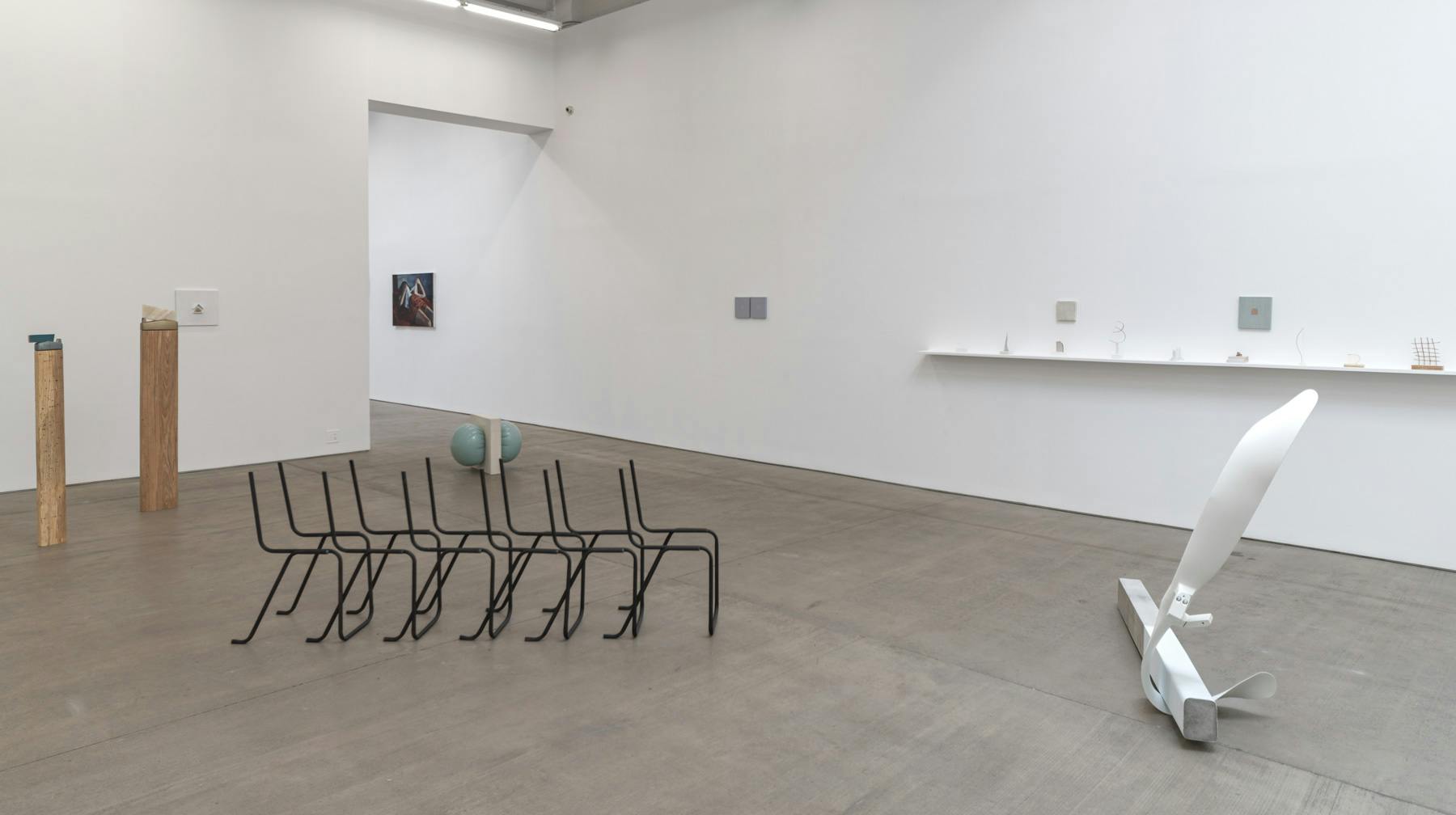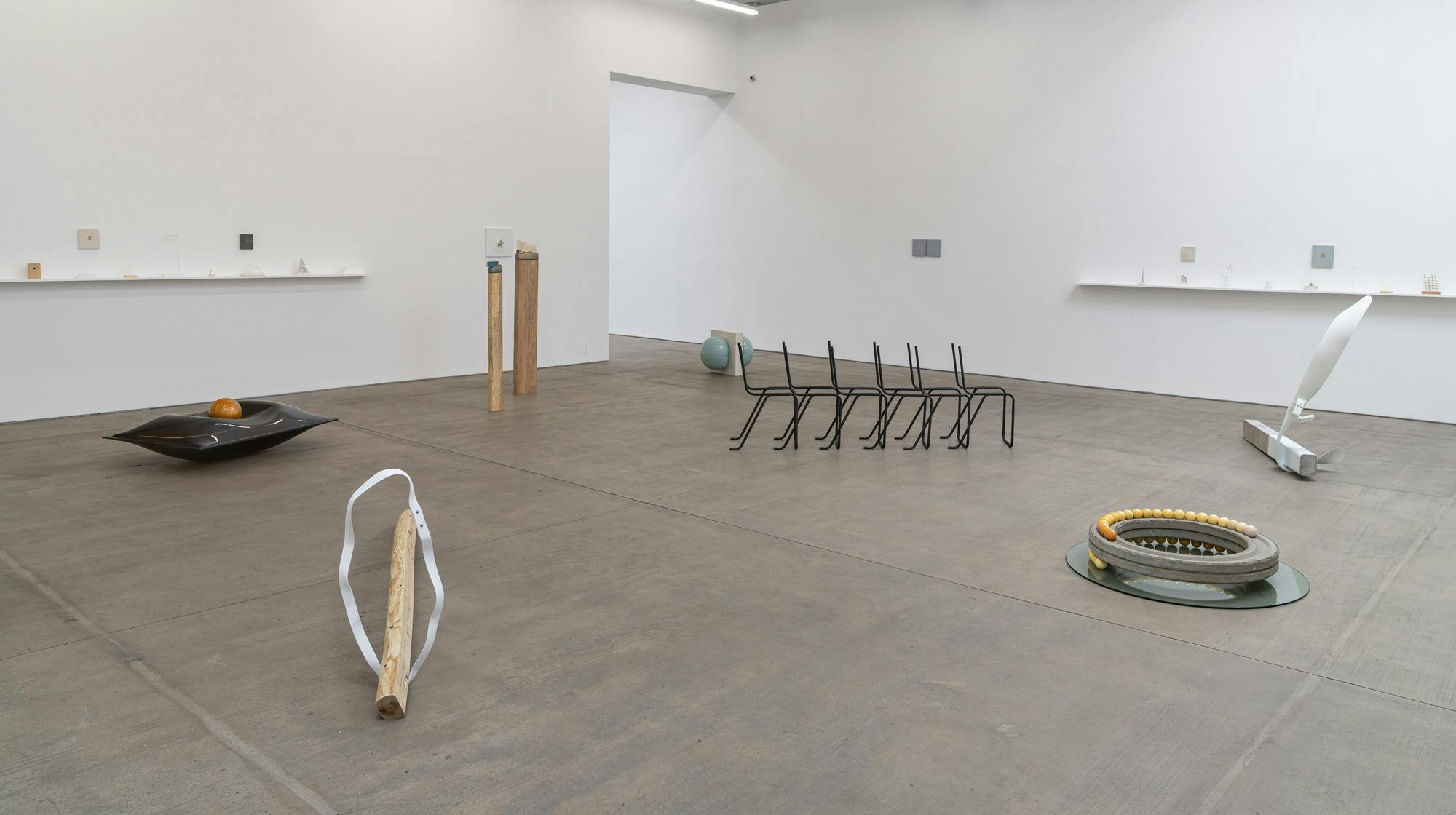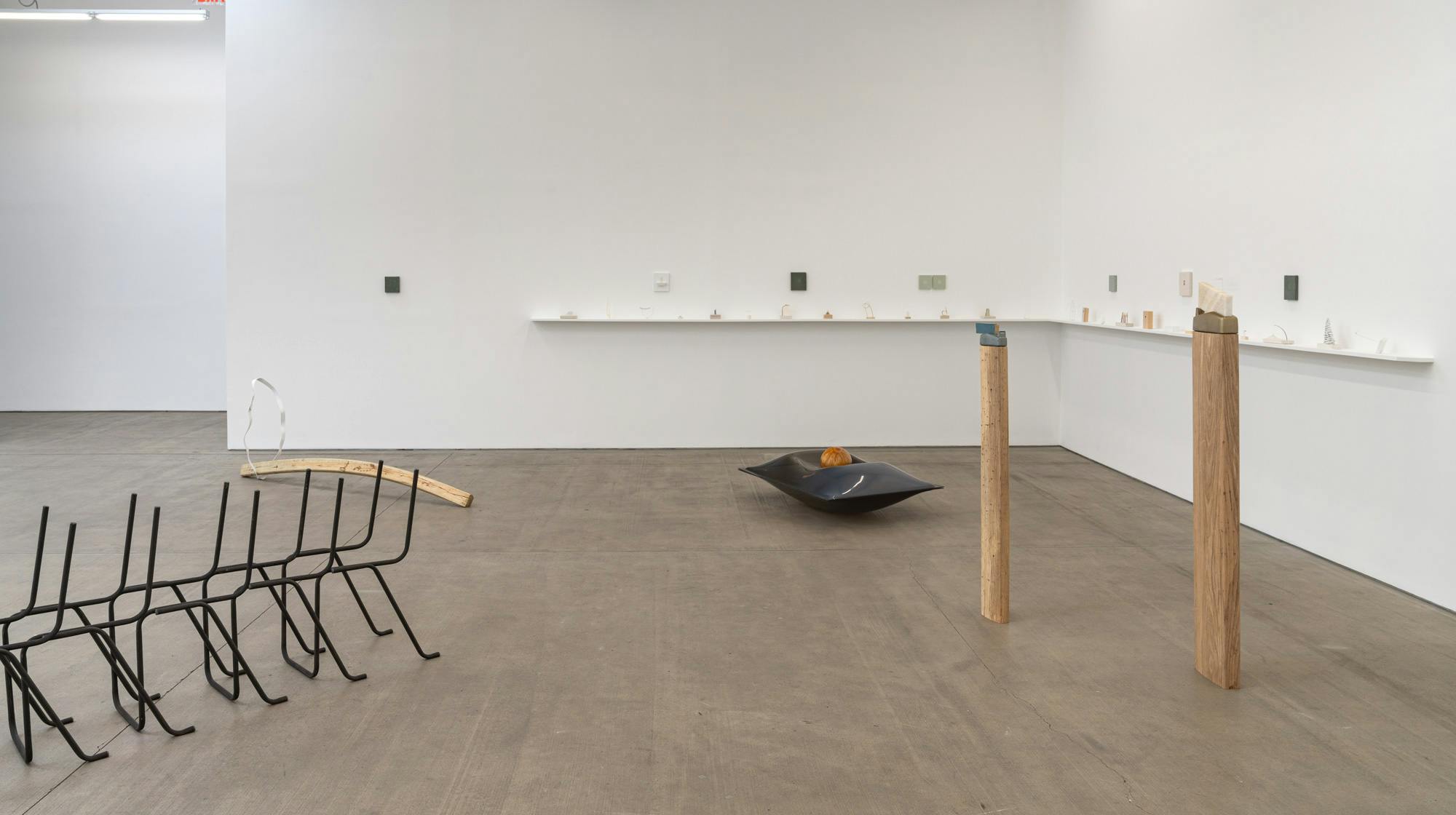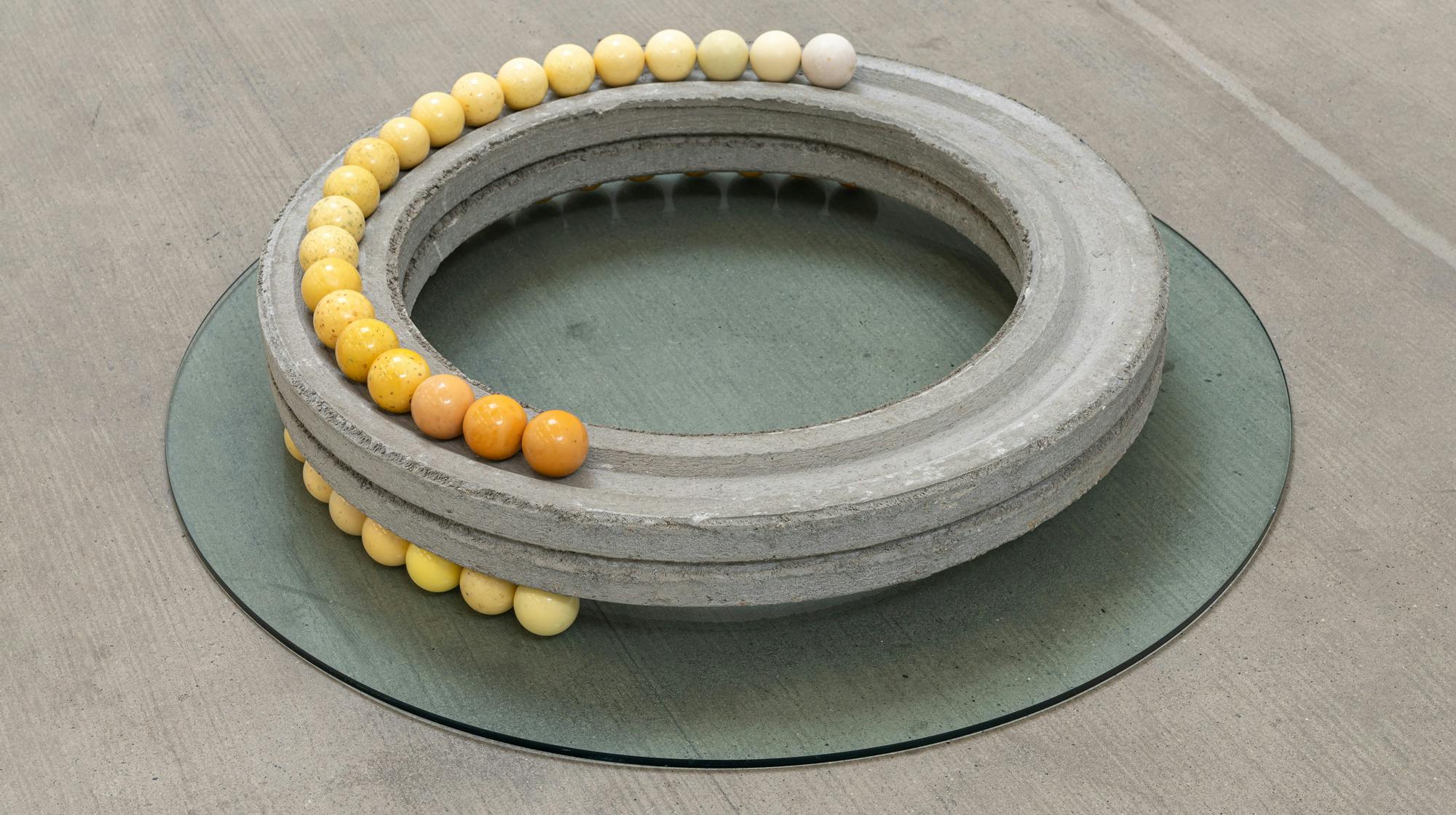Published July 11, 2023
Kiah Celeste on Recycling, Re-Purposing, and Following Your Instincts
When I called Kiah Celeste, she was taking a break from sanding a propeller in her studio. A remarkably resourceful artist, Celeste recycles discarded and industrial materials—forklift wheels, air conditioning units, steel pipes—into alchemical sculptures that she prefers to call “multi-dimensional works.” These objects form an ecology of their own: they lean on, squeeze, and caress each other in playful yet precarious configurations.
A Brooklyn native now based in Louisville, she has worked and exhibited both across the country and abroad—from Abu Dhabi to Basel, Hong Kong to Chicago. As she prepared for two summer shows at DOCUMENT Lisbon and Swivel Gallery’s new Bushwick location, Celeste and I spoke about her new body of work and sense of balance. This conversation has been edited for length and clarity.
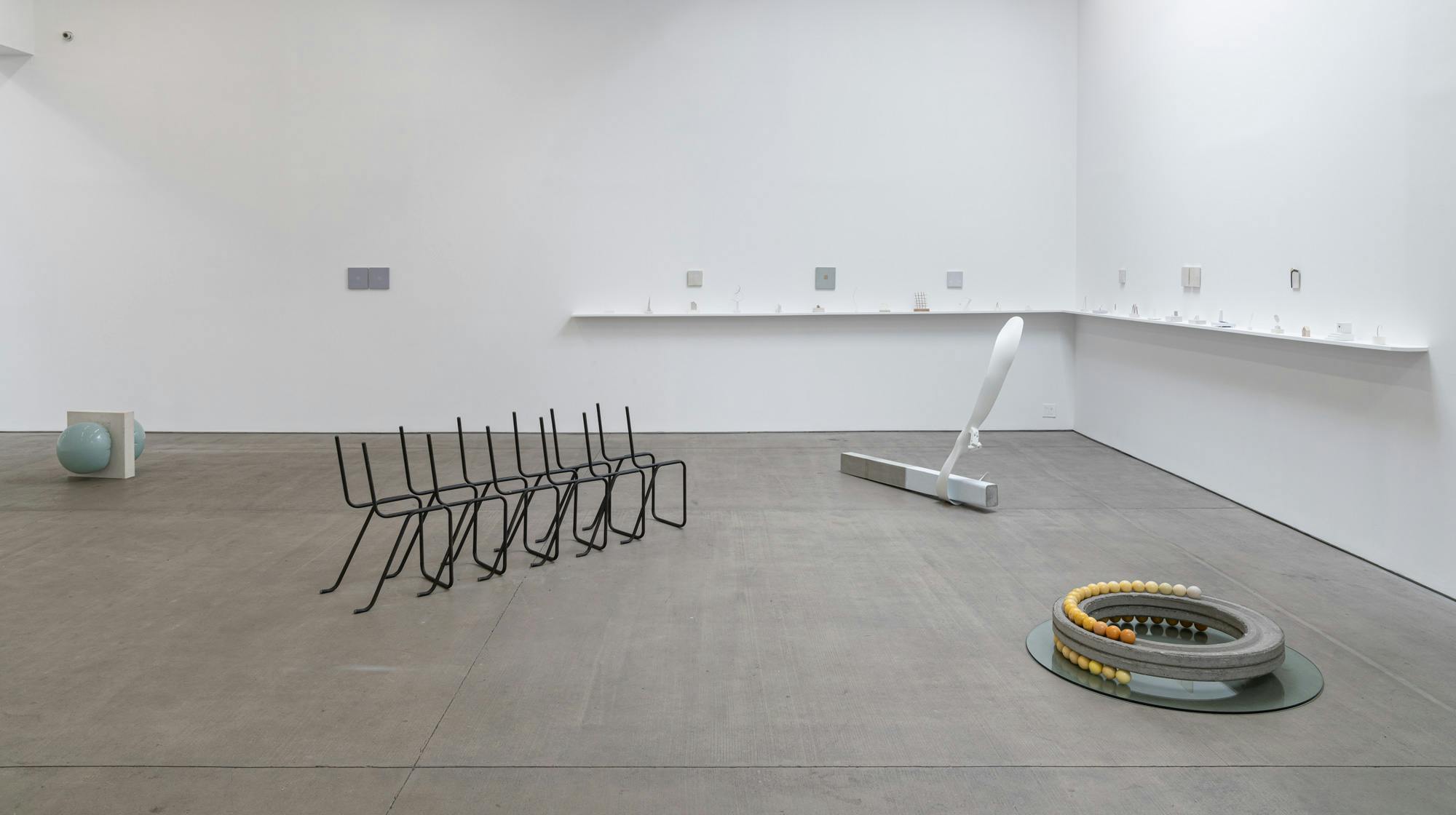
I'd love to hear first about what you're working on right now.
Kiah Celeste: For several reasons, I almost exclusively use recycled and re-purposed objects that I find in various places. I'm very concerned about the environment, but this practice also came about in a time when I had no money and little resources and was asked to be in a show. I was working in Abu Dhabi and just decided to say yes and figure it out. When I went out searching for materials on the street, I found things like a pink fiberglass bathtub, tiles, glass pieces, and metal rods. I made a balancing sculpture out of that which was kind of a revelation. It was exciting to work so freely without restrictions: I just made the rules for myself. It was really rewarding to work with what the universe bestowed onto me instead of looking for very specific materials.
And then this idea of balance was another way to fasten these objects together without the use of hardware or adhesives. That was partly because I was working as an art handler for years, and I was just so tired of using technical processes. I wanted to be free of that—I have very little patience, which can be a gift and a curse.
This idea of physical balance has recently transcended into metaphorical balance. I realized that this balance that I'm attracted to maybe comes from my own identity. I always thought my work was just abstract and absurd, having nothing to do with my life directly. But recently I’ve been thinking about how I’m riding in the balance between most categories in my life: I’m a mixed woman, Black and Jewish, as well as being a little androgynous, but also feminine. I feel a sense of non-belonging in most places. The one place I've found a kind of belonging is in my studio, where I make these objects intertwine and integrate with other objects—and make them seem inevitably meant for each other. That's who I am as a person as well.
That's interesting. This balance also lends your work a sense of precarity. But, at the same time, your compositions are very still.
KC: Yeah, they have stillness, but they're also caught in a moment of movement. They've been seized and paused right in that moment. It is a moment of comfort but also tension, and precarity edging between a lot of different faces. That’s how I feel in my life, which sounds anxious, but I'm also comfortable in that place. There's also that balance between the materiality itself: these soft and hard materials, industrial and household, light and dark, heavy and light.
How else has your work evolved in 2023?
KC: I've been using heat a lot—in different senses of the word. Recently I found a bunch of these acrylic and polycarbonate skylight domes on Facebook Marketplace… I'm very resourceful. I had an idea to use a bowling ball and sink it into one of these domes by molding it into that shape. My partner and I made a large oven out of an infrared heater and insulated panels and got it up to 300 degrees. This made the plastic malleable so I was able to sink the ball into it.
I've also been using an angle grinder, which has let me breach this new world of “fabricating.” I'm cutting things now, and I'm melting them in conjunction with my other found objects.
You rarely, if ever, choose to use natural materials in your work. Why do you gravitate more towards recycled and industrial media, such as fluorescent light tubes and garden hoses? Is there a specific symbolism or connotation of these materials that you’re attracted to, or is it simply the aesthetic “thingliness” of them when they are removed from their ordinary functions?
KC: It is more the artificiality of these objects that I'm attracted to—and how I’m able to make them feel organic. I do like wood sometimes, and I am aesthetically interested in natural materials.
But when I look at nature, I almost don’t want to mess with that beauty. I don’t need to improve it. I'd rather play with things that were never meant to be beautiful or aesthetic because they were always just functional. So I'm transforming something into a beautiful thing that isn't already understood as an art object or something to admire.
Just to take a step back, I'm interested in why you choose to identify as a “multi-dimensional artist.” Is there a reason why you're reluctant to call yourself a sculptor? Is there a sense of freedom you get from evading that term?
KC: Yes, that's what it is. By definition sculpture is just a three-dimensional art object, so technically I'm a sculptor. But I don't “sculpt” or carve much; I more “use” objects. That’s why I call myself a multi-dimensional artist—it’s also poking at the nonsense within my work, and in a way making fun of the art world in general.
At the same time, I do believe that there’s a lot of dimension in my work, and a lot of ways to look at it. It's not just sculpture, but it's also not just installation.
So how do these multi-dimensional juxtapositions come out? Do you sketch them first or do they only exist in your mind? Or are you simply working from instinct?
KC: It's a little bit of everything. Sometimes I have an idea in my head for a while—but, in order for me to manifest it into tangibility, I draw it out. Then I'll maybe go find materials or objects specific to that sketch or idea. Other times I'll find an object that I’m really attracted to and decide to make something out of it.
What about your titles? Do they have a specific relevance or are they added after the fact à la Magritte?
KC: They're usually added afterwards. Very rarely one will come while I'm making it. Some of them reference very abstract things that only I get—or someone that is very intuitive or a Jeopardy fan, I guess. Some of them are just nonsense words, but some of them are kind of poetic—poetry within titles.
You currently live in Louisville, but you've described your career as peripatetic. How have the different places in which you've lived formed your materials and approach?
KC: My work is absolutely dominated by my current environment, because everything I find is here. But my ideas themselves have a lot to do with everything in everywhere I've been throughout my life. Things I’ve experienced on my travels. When I’m on a road trip, I find that driving [and the act of traveling itself] is a very thought-provoking or idea-sprouting atmosphere...
Other artists who are doing things that I'm interested in get into my head. I hate to say, but it’s thanks to Instagram—being able to search artists and seeing what other artists are doing all over the world. It is very influential, subconsciously and consciously.
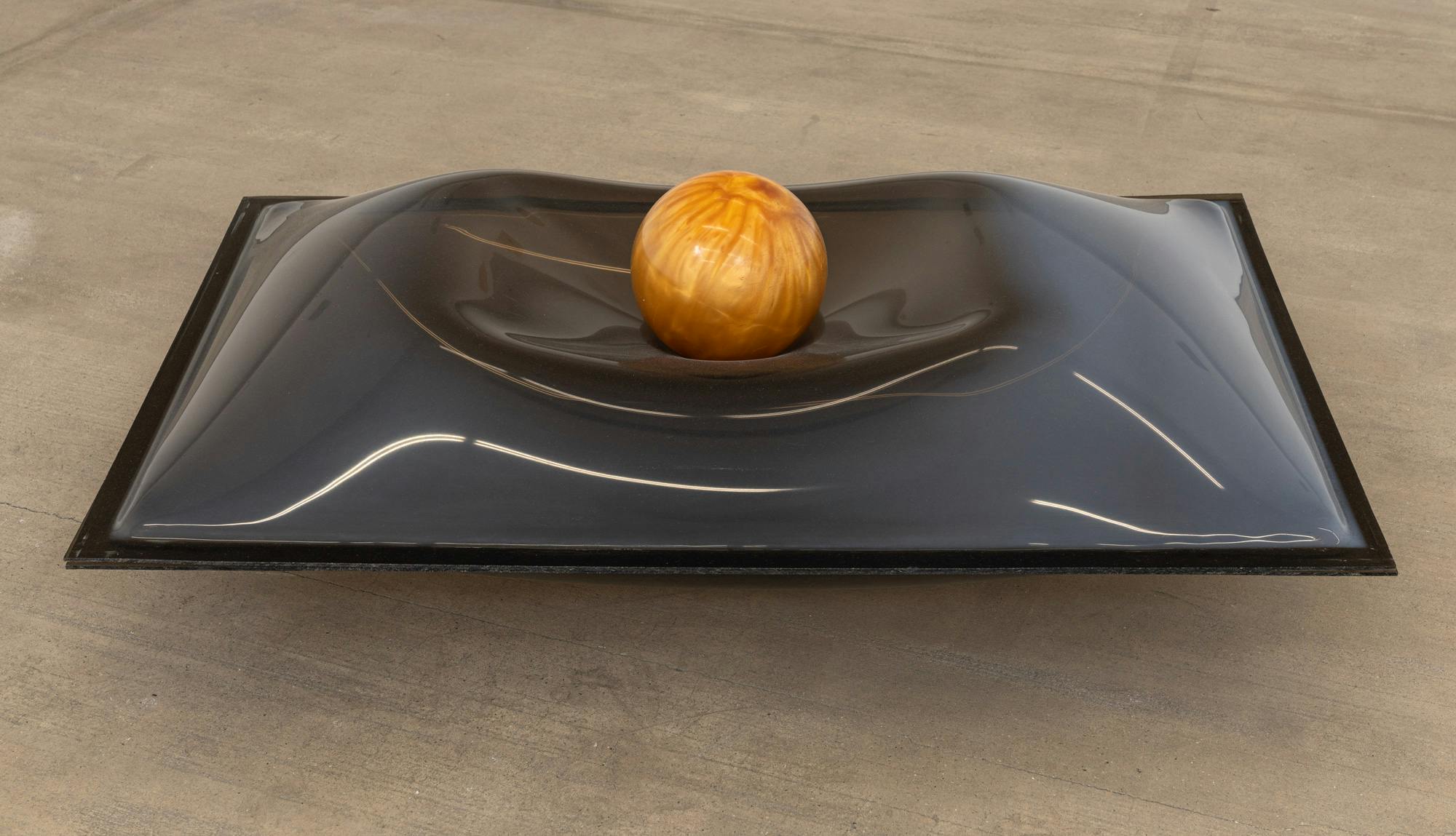
You studied photography in art school. Do you think that background is translated in your work today? It seems comparable as your work captures the sense of movement in a single frame.
KC: That's interesting—I hadn't really thought of that before. I wanted to get away from photography; it wasn't where I was meant to be. I like photography, but I don't like the process or the technical part of it.
I was very much influenced by school and what my professors were encouraging. I was being stifled; I didn’t listen to myself. I didn’t trust my own instincts. After my college career, I started to work with my hands—I think because I started working at the Guggenheim as an art handler.
One of the artists that I met working as an art handler was Katie Bell, who rides the line between sculpture and painting. She blew my mind, showing me you don’t have to say you’re this or that, or conform. Now I’m just following my own instincts. I'm listening to what I feel and what I know is right to me. This is the work that people are responding to and that I find to be the most successful.
You also have made a body of conceptual and socially-driven work, which often deals with the neglect of Black American women. Do you consider this practice distinct from your recent sculptures?
KC: I was doing that work between 2017 and 2019, and it was really heavy to deal with. I’m already dealing with this in my daily life—putting it into my work just felt overwhelming. I think that’s what drove me to make more abstract work, which is therapeutic. It feels like meditation away from all that stuff because it can get exhausting.
At first, I thought this recent work had nothing to do with my social identity or culture, but it does. The art world’s expectation is that Black artists are obligated to make work only about their identity. My work is about being Black and being a woman and being everything I am because the work just is me. And it doesn’t have to have a direct reference to my struggle or my background. I’m realizing that my work does have to do with my identity because of this notion of balance and precarity, edging these in-betweens through materiality.
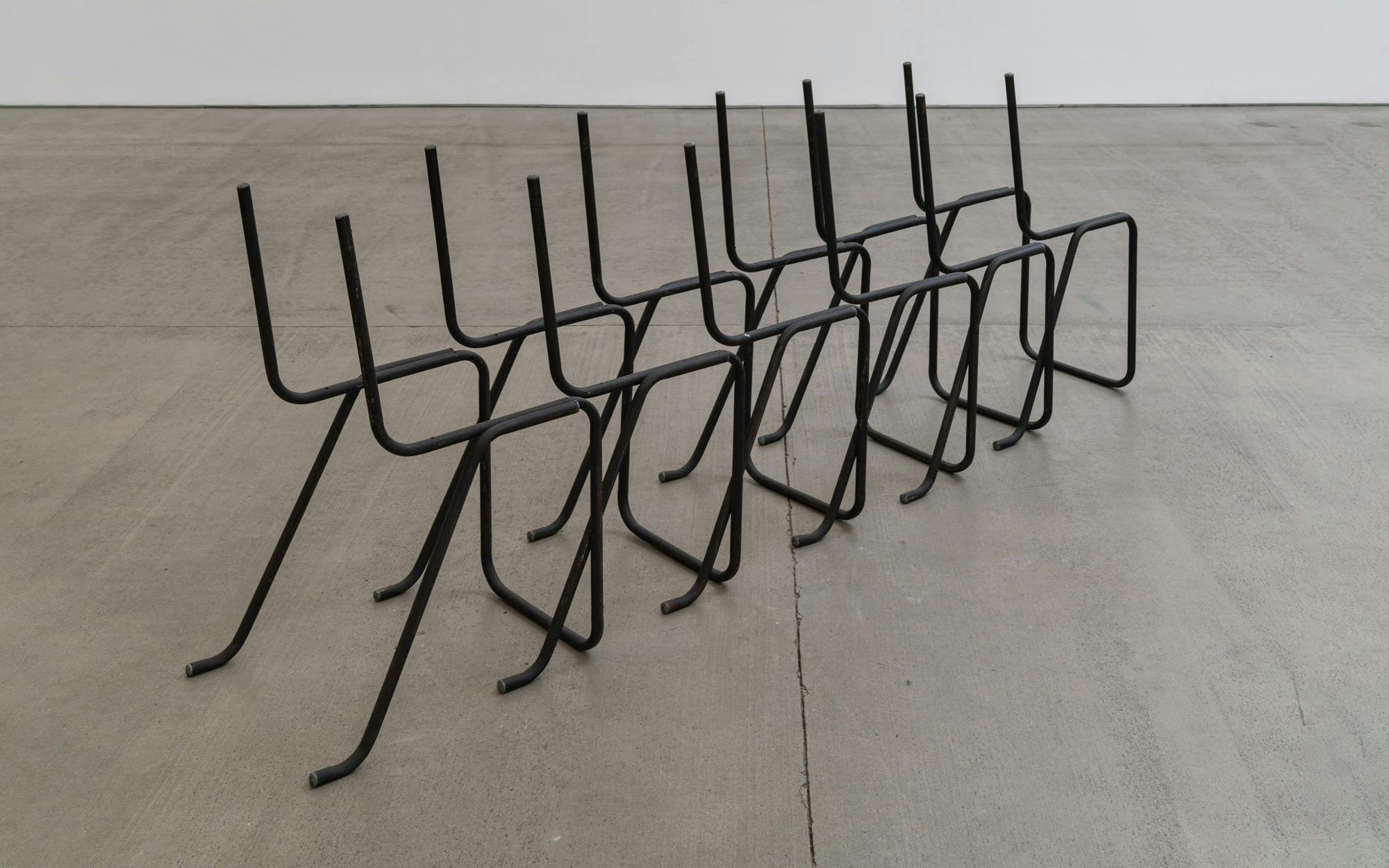
I listened to an interview in which you said that artists are extremely important for society. What do you believe artists can offer the world?
KC: Since I've shown my work and gotten a little more notoriety, people have told me that the way they think about the world has changed. The way that we think about the world is just so depressing, and the way we react to it is very discouraging and disheartening for me. To hear that someone is thinking about it differently—that my work is opening up things that they’ve never thought about before in their life—feels like I’m changing something for the better.
When you use materials that seem mundane or are overlooked, you can help people to appreciate things that seem unwanted. Recycling doesn’t always seem sexy or fun, and I understand that people need pleasure.
The main pleasure that I get in my life is to build these things up out of entropy and reintroduce them out of decay into my studio—my little Wonderland—and then show them to the world. That is what gives me pleasure. If other people learn to harness something like that, then maybe art will be beneficial to society and the environment, as well as fulfilling personally.
Testudo is always looking for more voices to write with us about the art world. If you’d like to pitch an article, please see our pitch guide for more information!
